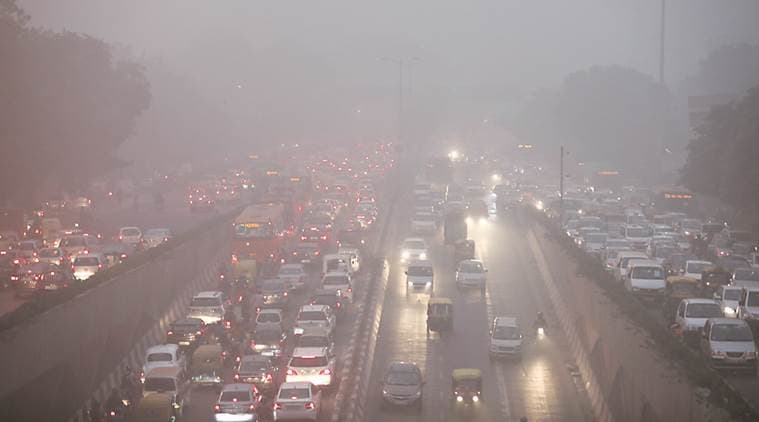
As per WHO (World Health Organization), the air quality of Delhi is worse than many cities in the world and per the survey, the air quality of Delhi is expected to worsen after the phenomenon of stubble burning in the neighboring states that has been started. Hence, a constant research is going on to control the pollution and few steps have been taken to control this pollution in the capital.
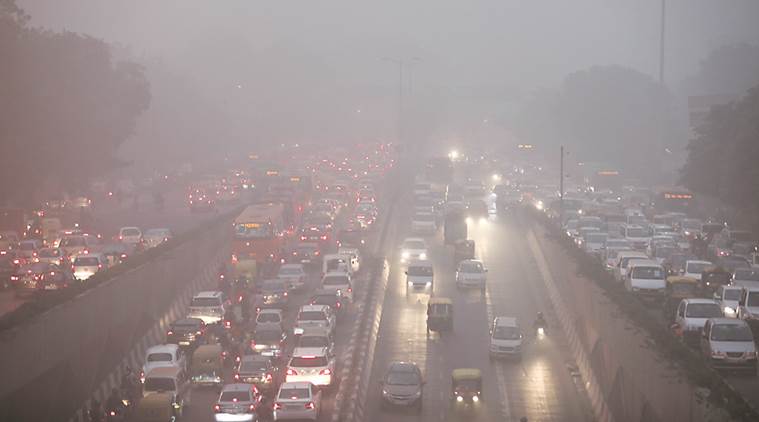
Image Courtesy – indianexpress
In an attempt to resolve the issue of air pollution through technology, National Environment Engineering Research Institute (NEERI), along with IIT Bombay, has developed a unique device for the congested, polluted areas of the city. Wind Augmentation and Air Purifying Unit (WAYU), a sophisticated air purification device that purifies air within a 20-metre range, could work as a boon for the traffic police and residents of congested polluted areas of the capital.
Also Read: Air Cleaning Devices in a Smoke Generating Factory
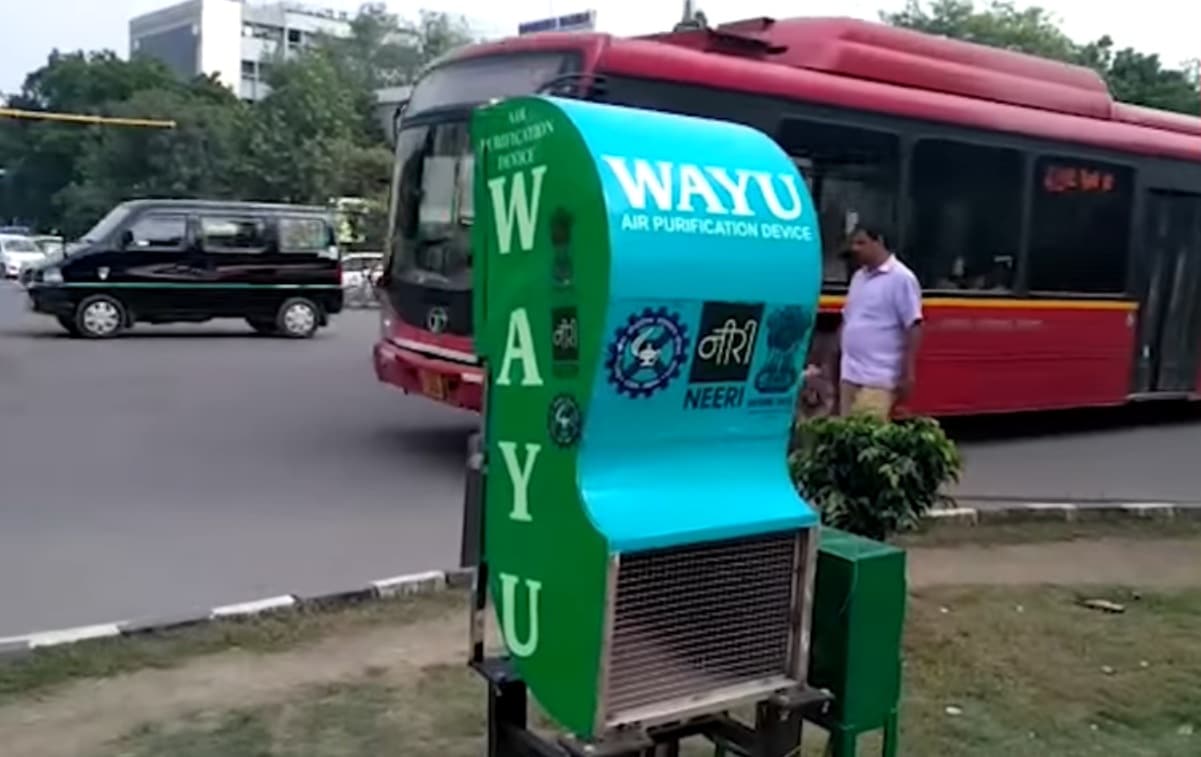
Image Courtesy – The Times of India
WAYU (Wind Augmentation Purifying Unit), a unique system for diffused air pollution control system, has been born out of the simple need to resolve the issue of pollution in metropolis and its ill effects on the residents, as well as those who spend extended hours in its presence. As per NEERI(in its detailed report in 2010), where air quality monitoring was carried out in Mumbai, confirmed how certain parts of the city have very poor air quality. From the report, it has been confirmed that the major contributors to poor air quality is from vehicular traffic and re-suspended dust containing carbon monoxide 30-35%, particulate matter (20-30%) and nitrogen dioxide and nitric oxide 35-70%.
When Delhi’s air quality level was ‘good’ on CPCB (Central Pollution Control Board)’s Air Quality Index (AQI), falling to as low as 38, Union environment minister Dr Harsh Vardhan unveiled two localized pollution control devices in the capital. The device called WAYU (Wind Augmentation Purifying Unit)has been installed at ITO and Mukarba Chowk in New Delhi. The minister said they are planning to install 54 additional devices at busy intersections before October 15, 2018.
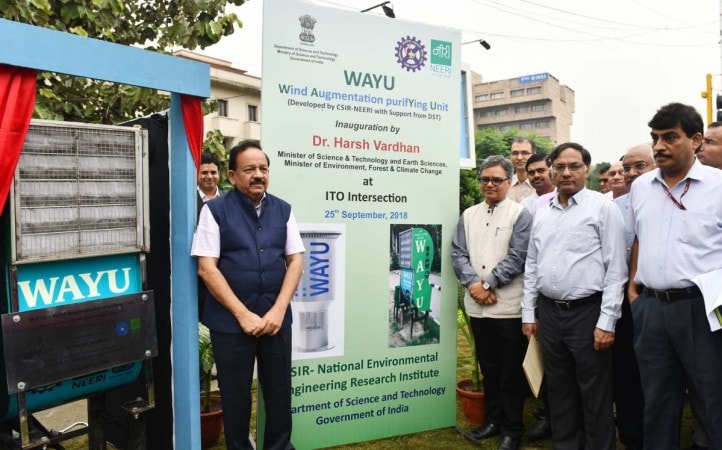
Image Courtesy – ibtimes
The device has been developed by Council of Scientific and Industrial Research and National Environmental Engineering Research Institute (CSIR-NEERI) as a part of a project being funded by Department of Science and Technology. Dr Harsh Vardhan said that while this particular device is capable of purifying air in an area of 500 square meters, they have plans of developing much larger devices that can cover an area of 10,000 square meters.“The device only consumes half a unit of electricity to run for 10 hours and has a maintenance cost of Rs 1,500 per month.
According to Dr Rakesh Kumar, director at NEERI, each device has been built at a cost of Rs 60,000. “The larger device is being planned and may cost of about Rs 2 lakhs.
WAYU makes use of filters to remove particulate matter, alongside activated carbon and UV lamps to remove gases like carbon monoxide and VOCs. The device has been built to take in air, purify it and release cleaner air back into the surroundings.
Dr Rakesh Kumar, director of NEERI, explained that the device works on two simple principles – wind generation for dilution of air pollutants and removal of active pollutants. “The device uses low speed wind generators and filters along with a thermal oxidizer for removal of toxic content. The air is passed through the filters where the particulates are removed. The air is heated inside the specially designed section of the device with appropriate surface and retention time, within the RTO, where the carbon monoxide, hydrocarbons, VOCs (Volatile organic compounds) get converted to carbon dioxide,” said Dr Kumar.
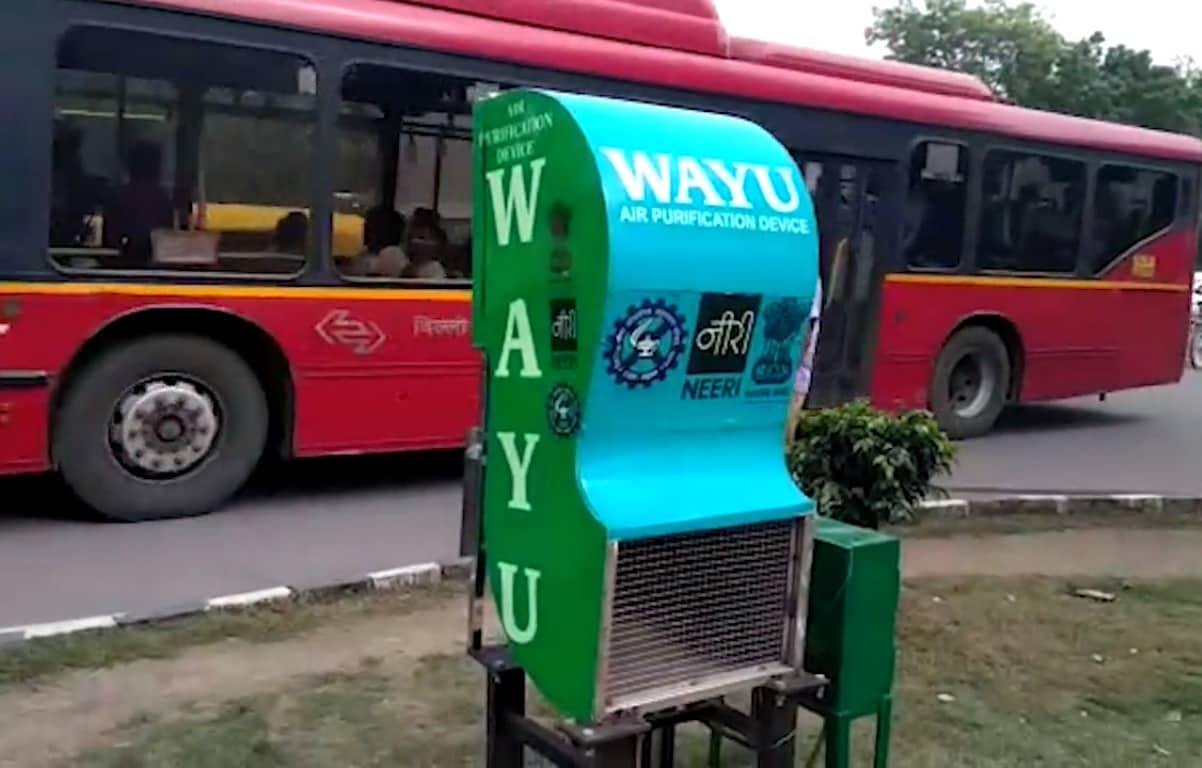
Image Courtesy – Times of India
Why at Intersections?
Vinay Padalkar, an IIT-Bhubaneswar alumnus, who worked on the project along with NEERI, said that they found out that vehicular intersections are the most polluted vicinities on roads and thus they focused to resolve the issue at intersections. “A vehicle typically accelerates and decelerates when it comes across an intersection. This causes higher amount of pollutants to be released in the atmosphere.
Buildings, typically surrounding the intersection, create an urban tunnel effect. As the vehicle-induced turbulence is negligible at the intersections, the pollutants get trapped leading to higher exposure of pollutants to people,” explained Mr Padalkar.
Apparently, at the outlet of the device the air has some residual velocity; the air creates enough turbulence in the atmosphere, which helps to bring down the pollutant concentrations by the method of dispersion. Mr Padalkar also confirmed that the device has been tested at a traffic junction and was found to reduce the pollutant concentrations by 40-60%.
Why such Devices?
To find a solution to asthma, chronic obstructive pulmonary disease, cardiovascular disease, cancer and increased mortality issues among susceptible groups like traffic cops, pregnant women and children as well as senior citizens, the system was developed, which could improve the air quality at urban intersections in a way that it can work with solar power.
Know More About WAYU
- A 10-day pilot study in 2014 showed the device brought down pollution levels considerably low.
- For the study, one unit was set up near the main entrance of IIT-Bombay, Powai.
- PM(Particulate Matter)2.5 levels dropped from above 100 micrograms per cubic metre (ug/m3) to as low as 40 ug/m3. The safety limit is 60 ug/m3.
- Similarly, PM(Particulate Matter)10, which was more than 160ug/m3 as against the safe limit of 100ug/m3, dropped by half to 50ug/m3.
- According to Mr Vinayak Padalkar, a single instrument costs between Rs30,000 and Rs40,000 and the total project cost would approximately be Rs70 lakh, excluding cost of solar panels and specific designs required for different traffic junctions.
- “The device has five ducts that suck in air, trap particulate matter and release clean air using the principle of dilution. However, for CO and VOCs, the air is heated inside the instrument and thermal oxidizers break down the pollutants at high temperatures into simpler forms like carbon dioxide (CO2),” said Vinayak Padalkar, IIT-B alumnus and the brain behind the instrument.
Where or When WAYU Devices are Installed?
- Union Science & Technology Minister inaugurates air pollution mitigation devices at ITO and Mukarba Chowk in Delhi. By 15th of October, the ministry plans to install 54 more WAYU devices at various traffic intersections across Delhi.Air Pollution is a global issue, at some point which is faced by everyone on this planet. Every country is either implementing few solutions or researching for new concepts to reduce air pollution with the help of technologies and natural ingredients. Green City Solution is a German company which made city tree for reducing air pollution. City tree is recyclable unit with living, breathing air filter that can be set up in cities. It also measures pollution types and levels. City Tree unit actively clears the air through a careful mix of plants that work like a small forest(City tree cleans air as much as 275 trees). City Trees have been installed across cities in Europe, from the company’s home city of Dresden to Oslo, Paris, Hong Kong, Budapest, Glasgow, and more.































